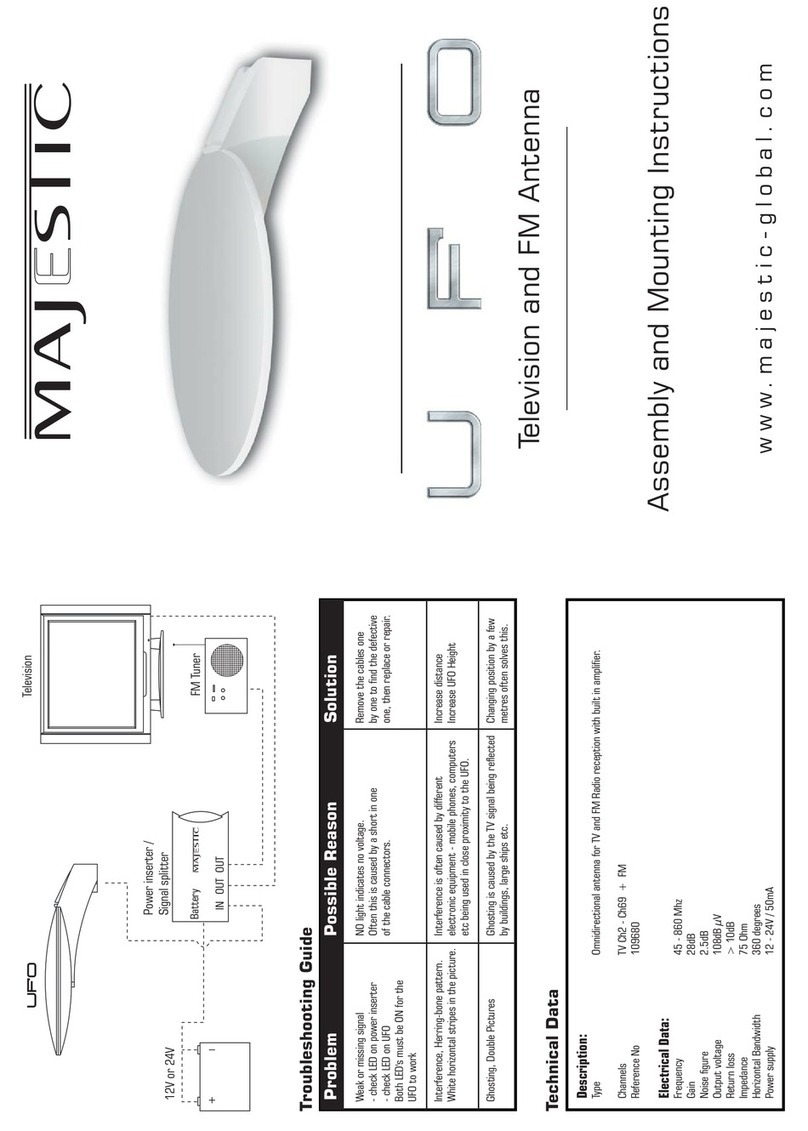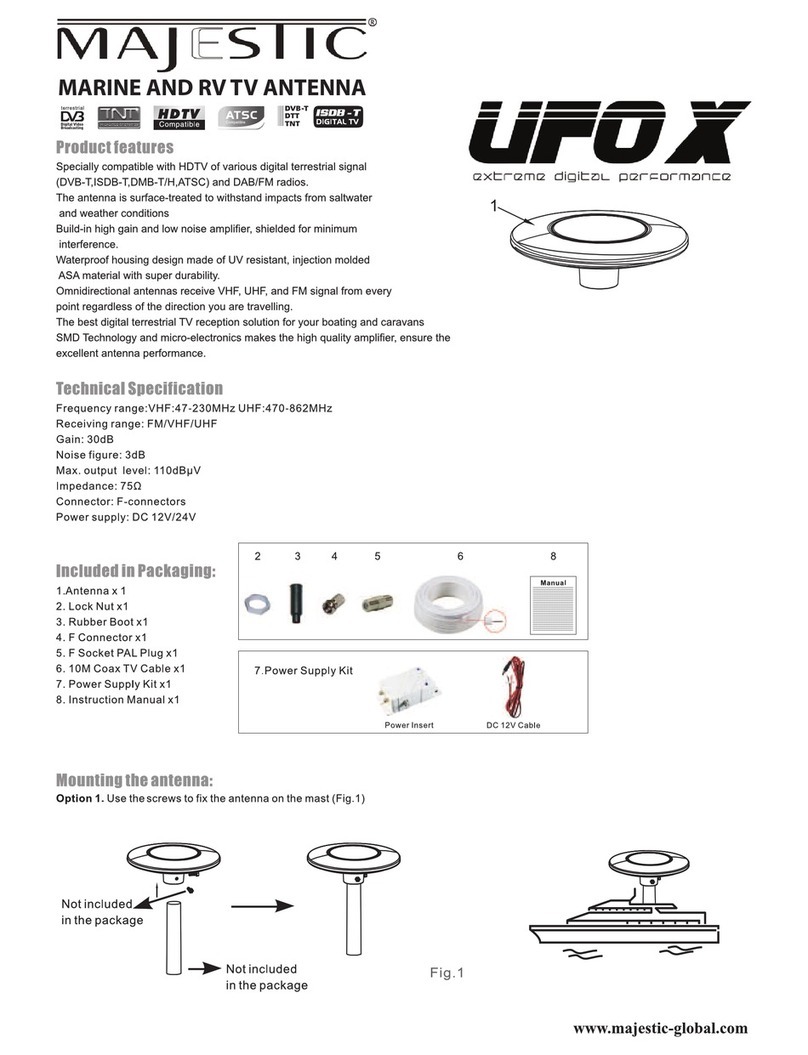
2.1.2 Installation Tools and Materials
The SATPOS20 system is designed for simple installation and setup.
However, the following list of equipment or items should be available
during installation of the SATPOS20:
■Electric drill and drill bits (Define the size?) eg. 5mm & 2mm
■Philips and flat tip screwdrivers (Define the size?) eg. #2 & #0
■Socket wrench
■Silicon sealant
■Fastener suitable for specific application
2.2 Antenna Installation
2.2.1 Select Location
Perform a through site inspection on the roof for the antenna to be mounted.
1. The antenna must have a clear view of the sky and horizon at all the
direction to avoid blockage of the satellite signal.
2. The antenna should be on the centerline of the vehicle.
3. The antenna should be mounted on as level a surface as possible.
4. Initial power-up and system checkout
5. Using two people, place the antenna onto the roof. Do not try to install
the antenna by yourself.
■Now that the location has been determined, place the antenna in
its final desired location.
■Make sure that it is the centerline of the vehicle
2.2.2 Equipment and cable installation
This offers a general explanation of how to install the Indoor Unit and
satellite receiver properly to the inside of vehicle connecting with coax
cable.
1. The RF cable is routed from the antenna to the IDU inside the
vehicle.
2. Once decide where to place the IDU and satellite receiver, and
make sure that both units are placed in a dry and protected area.
3. The IDU and satellite receiver should be placed away from any
heat source and in an area with proper ventilation.
SATPOS20
9
































